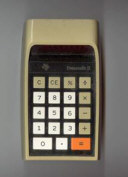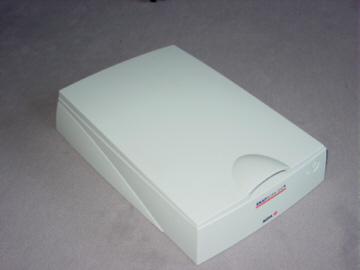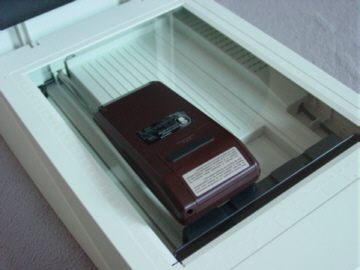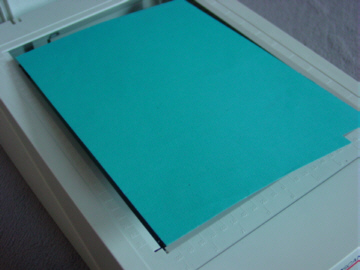
DATAMATH CALCULATOR MUSEUM
 |
DATAMATH CALCULATOR MUSEUM |
Texas Instruments MYSTERY
| Date of introduction: | Display technology: | ||
| New price: | Display size: | ||
| Size: | |||
| Weight: | Serial No: | ||
| Batteries: | Date of manufacture: | ||
| AC-Adapter: | Origin of manufacture: | ||
| Precision: | Integrated circuits: | ||
| Memories: | |||
| Program steps: | Courtesy of: |
Dear fellow collector, Dear visitor
To complete the Datamath Calculator Museum we need your help. Up to now
we got no picture or technical data of the calculator you searched for.
Maybe
you already own one? We like to ask you if we can place your picture here?
| Thanks for your help to complete my
little Datamath Museum. To give a homogeneous look and feel of the pictures I recommend the following
technique of scanning. Best results were given with an old-fashioned scanner using a lamp and moving optics instead of a LED-array. |
 |
| Place the calculator roughly 1 inch
away from the front of the scanner-window. The calculator should be 1 inch away from the left side of the scanner, please align the calculator carefully. Position the calculator in a direction that the displays "shows" to your direction. This position gives due to the optical path of the scanner some kind of 3D-imagination. If the depth-of-field gets large, e.g. some desktop calculator it is better to align the calculator in the middle of the scanner. |
 |
| Place a light-blue paper above the
calculator to give a neat background. The paper shouldn't be too dark. Scan with a resolution of 150 dots/inch
and leave a border of minimum 0.5 inch around the calculator. If your scanner software distinguishes between object sources, try "matt photo paper". |
 |
For most collectors some technical specifications are from high interest. Please feel free to decide whether you will disassemble your calculator or not.
| Date of introduction | As accurate as possible |
| New price | In US$ |
| Size | Length, Width, Height in Inches |
| Weight | In Ounces |
| Batteries | Number, Size, Type, Rechargeable ? |
| AC-Adapter | Input Voltage, Output Voltage, Current, AC/DC, Type |
| Precision | Number of calculating digits |
| Memories | Number |
| Program steps | Number |
| Display Technology | Silver-LCD, Yellow-LCD, LCD, LED, VFD... |
| Display Size | Numeric, 14-segment, Alphanumeric, Mantissa + Exponent |
| Serial No. | From Backside of calculator |
| Date of Manufacture | e.g. 225, 160988, I-0990, RCI-2288... |
| Origin of Manufacture | e.g. USA, ATA-xxxx, C-xxxx... |
| Integrated Circuits | e.g. CD4516-8812 |
| Courtesy of: | Your Name |
If you provide us your email address or a link to your website we gladly add it to the calculator description.
You may reach us here: joerg@datamath.org.
If you have additions to the above article please email: joerg@datamath.org.
© Joerg Woerner, May 25, 2002. No reprints without written permission.